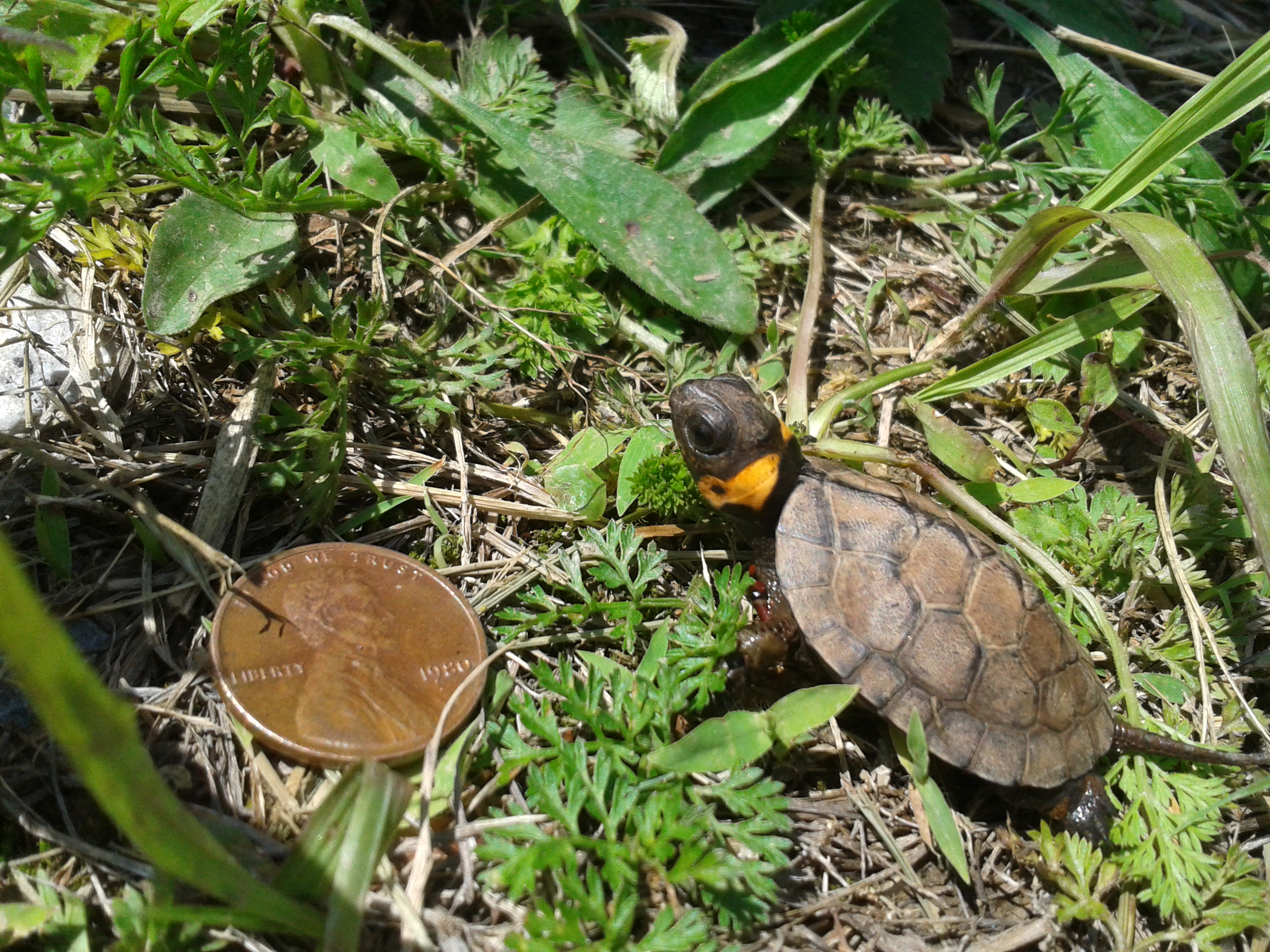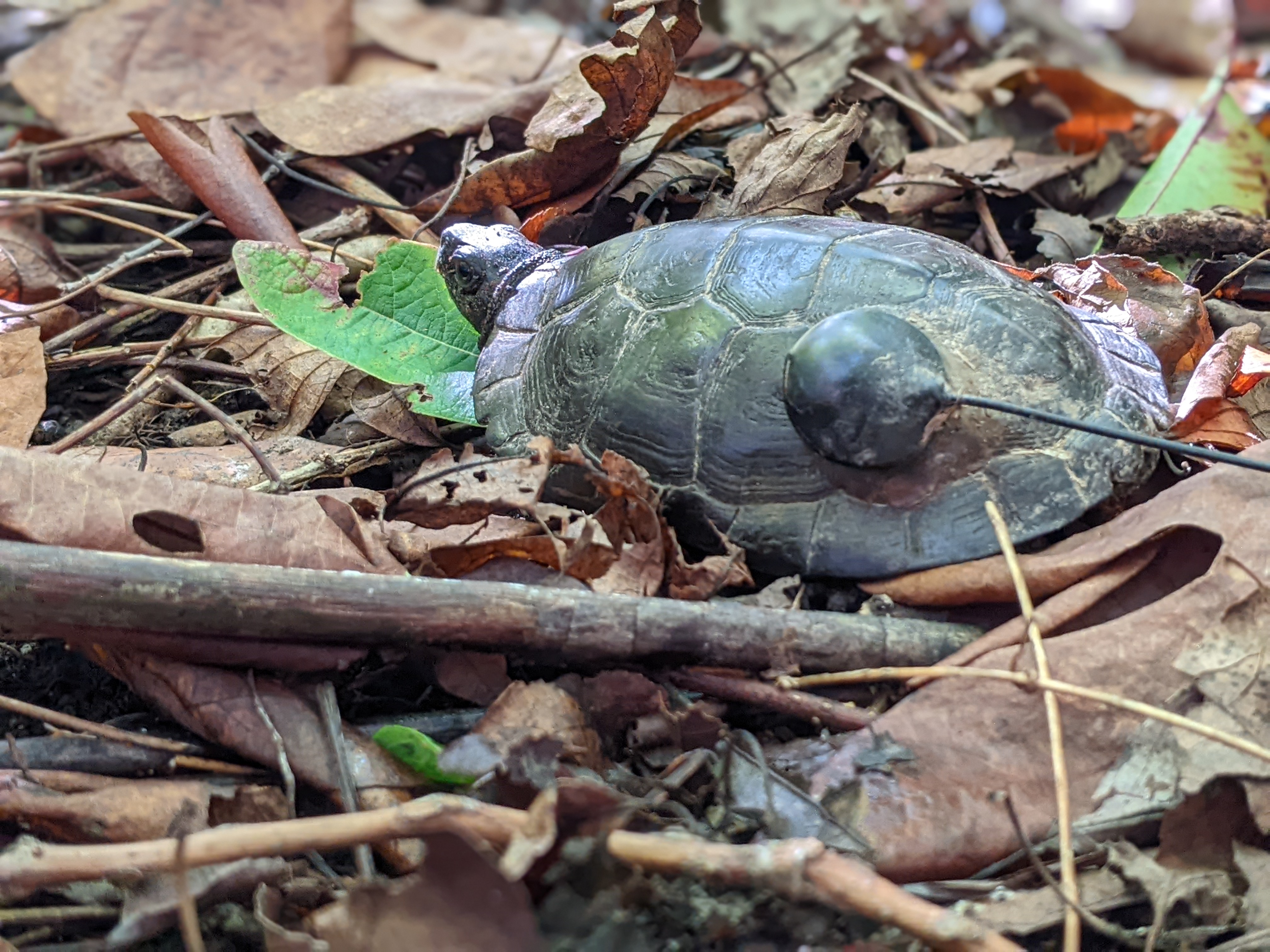The word “bog” often conjures up thoughts of peat-preserved mummies who met violent ends – but that’s not the only thing to be found in them. In the wetlands of North America, there’s a tiny creature that’s so cute, it’ll make you forget about any such grisliness: the bog turtle.
Turtles in general are pretty darn delightful (apart from those ones that hunt ducklings, you guys are on thin ice), but this one takes the biscuit, primarily because… well, it’s just so adorably teeny tiny. Adult bog turtles (Glyptemys muhlenbergii) don’t get any longer than about 11.4 centimeters (4.5 inches) long. Not only does that make them smaller than a toddler’s size 5 shoe, but also North America’s smallest turtle species.

A baby bog turtle is little bigger than a penny.
Unusually for such little creatures, bog turtles also have an impressively long lifespan. In the wild, they’re capable of living more than 60 years, though a long life in which to find them doesn’t necessarily make bog turtles any easier to locate. Their tiny size already creates a bit of a hurdle to bog turtle spotting, but they also spend most of their time either under water or buried in mud or vegetation.
Being so hard to spot is something of a problem for the scientists trying to keep track of their numbers, and that in turn is an issue because the species is in danger. Bog turtles feature in the US Endangered Species Act, and they’re considered critically endangered by the International Union for Conservation of Nature.
It’s thought that they’ve reached this point for a number of reasons, including the degradation and fragmentation of their habitat as a result of residential and commercial development. However, natural changes have also affected their home, with the gradual encroachment of trees that outcompete the wetland plants that they eat and hibernate in.
They’re also slow to reproduce, not doing so until they’re at least 8 years old and even then, females only lay between one and six eggs once a year. Under extreme circumstances, their reproduction has significantly slowed or even stopped entirely.
Together with these threats, there are also two populations of bog turtles in the US, separated by a 402-kilometer (250-mile) gap. Only the northern population is federally listed as “threatened”, while the southern group is “threatened by similarity of appearance,” which affords it less protection.
Still, conservationists are working hard to ensure the survival of the species, aiming to meet the US Fish and Wildlife Service’s goal of delisting the bog turtle as a threatened species by 2050. Biologists with The Nature Conservancy, for example, have been working to restore bog turtle habitat, while others have been ramping up monitoring, breeding, and release programs.

Tags can help scientists keep track of bog turtles, as pictured here.
Such work isn’t just a matter of keeping these creatures around for their cuteness – bog turtles are also vitally important to the wetlands in which they live.
“We talk about bog turtles being a keystone species and providing habitat for other animals it lives with,” said Chris Urban, the Threatened and Endangered Species Coordinator for the Pennsylvania Fish and Boat Commission, speaking to the Chesapeake Bay Foundation. “You take away those habitats and take away this animal, you wonder where the tipping point is, where you have a collapsing system.”
Source Link: North America’s Smallest Turtle Is The Cutest Thing You’ll Find In A Bog